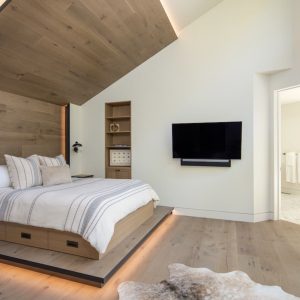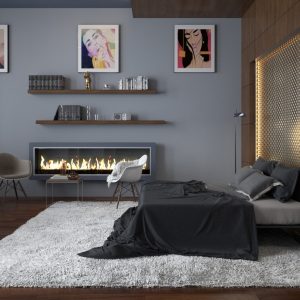Introduction
In contemporary interior design, false ceilings have become a popular feature to create unique and stylish spaces. Sometimes referred to as a suspended or dropped ceiling, a false ceiling is a secondary ceiling installed below the primary ceiling. It is usually made from materials such as gypsum, plaster, or GRG (glass reinforced gypsum) and can be decorated in a variety of ways.
In this article, we will explore different types of false ceiling designs, their benefits, and how they can be used to enhance your space.
Types of False Ceiling Designs
1. Cove Ceilings
Cove ceilings are one of the most popular types of false ceiling designs. They create an elegant and sophisticated look by curving upward from the walls to the ceiling. Cove ceilings are often used in bedrooms, living rooms, and dining rooms to add a touch of luxury.
2. Suspended Ceilings
Suspended ceilings, also known as drop ceilings, are lowered from the original ceiling using a metal framework. They are ideal for concealing wiring, ductwork, and other mechanical components. Suspended ceilings can be made from a range of materials, including metal, wood, and plastic.
3. Coffered Ceilings
Coffered ceilings are characterized by a series of sunken panels that create a striking visual effect. They are often used in grand settings, such as ballrooms and churches, but can also be incorporated into residential spaces for a touch of elegance.
4. Tray Ceilings
Tray ceilings are created by installing a rectangular or square-shaped recessed area in the ceiling. This design element adds depth and texture to a space and is often used in bedrooms and living rooms to create a cozy atmosphere.
Benefits of False Ceiling Designs
1. Temperature Control
False ceilings can help regulate the temperature in a room. By creating an air gap between the false ceiling and the original ceiling, cool air can circulate, and warm air can be trapped, making a room warmer in winters.
2. Enhanced Acoustics
False ceilings can be designed to absorb sound waves, making them ideal for spaces such as theaters, music rooms, and conference rooms.
3. Concealment of Unsightly Wires and Ductwork
Electrical wiring, ductwork, and other mechanical components can be hidden from view by installing a false ceiling. This not only improves the aesthetics of a space but also makes it safer.
How to Incorporate False Ceiling Designs Into Your Space
1. Create a Focal Point
Use false ceiling designs as a focal point in your room. For example, you could create a coffered ceiling above your dining room table, making it the centerpiece of the space.
2. Make a Small Room Look Bigger
Tray ceilings can make a small room look more spacious by giving the illusion of height. By adding a tray ceiling to a room with low ceilings, you can make the space feel larger and more open.
3. Add Texture and Depth
False ceiling designs can be used to add texture and depth to a space. For example, a cove ceiling with recessed lighting can create a warm and inviting atmosphere.



